Women’s rights forms another frontier in war-torn Yemen, writes Pat Griffiths in this special New Matilda feature.
BOMBS fall on Yemen. They have done so since the conflict there escalated in March 2015. In the memories of Yemenis however, they have fallen for much longer.
“In certain situations people date births and deaths and graduations and jobs and the purchase and sale of land in terms of dates of war,” said Sarah Jamal Ahmed.
Sarah is a sociologist, gender scholar and producer with the media collective Support Yemen.
Her country is the biblical and koranic home of Queen Sheba. It is an ancient exporter of coffee and the modern address of Al-Qaeda’s most active franchise, AQAP.
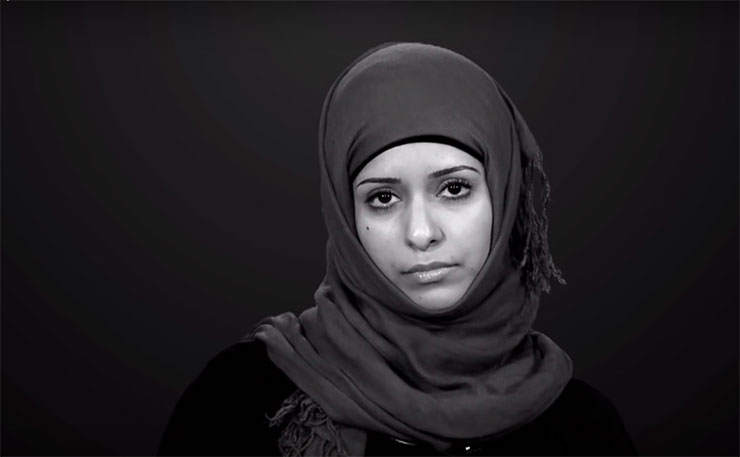
It is torn between two factions claiming legitimate government. One, an alliance of Houthi rebels and forces loyal to former president Ali Abdullah Saleh. The other, the government in exile of president Abd Rabbuh Mansur Hadi.
President Hadi’s forces fled the capital Sana’a in February 2015. In March a Saudi Arabia-led coalition of Gulf States imposed a naval blockade and commenced air strikes against the Houthis. There are sharks, not just big fish circling this little pond.
More than 10 000 people have been killed in the conflict since then. That includes nearly 4000 civilians, and close to 800 children.
Yet 19 months of life under airstrike, in conflict, and blockaded have exerted significant pressure on one section of Yemeni society more than any other.
Yemen ranks last in the World Economic Forum’s 2015 Global Gender Gap Report. The rights of women forms another front to this forgotten war.
“I’m just a person who wants to tell a story and understand that story because this will enable me to understand myself as a Yemeni,” said Sarah.
The women of Yemen are far from voiceless, and can speak out against a militant Houthi as much as against a militant Saudi. But amid a weave of turbulent politics, age-old tradition, male machismo and international intrigue, they struggle to be heard.
“I’m not a nationalist, let me begin this way,” Sarah said.
So that’s how we began.
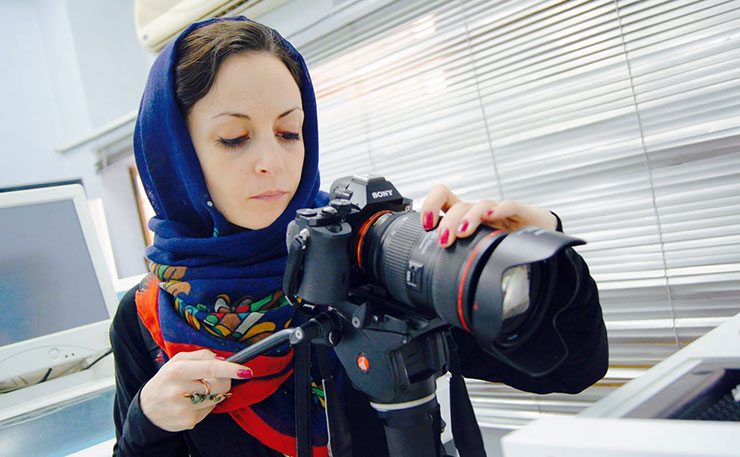
Karama is dignity
For Sara Ishaq, being in an airstrike is like having a fear of flying while your plane is in free-fall. It is all encompassing. The noise is inescapable, reverberating around you in its big, indiscriminate, shuddering mess.
“Your life is in somebody else’s hands,” she said. “Living in complete fear. There’s nowhere for you to go, nowhere for you to run. You’re just facing death.”
The time between hearing the sound of a rocket and its impact is the hardest. In those few seconds nobody knows where it might land.
Sara’s family have neighbours whose house has been bombed four times. After the dust had settled, Sara’s family would ask their neighbours why they had been targeted. Their neighbours didn’t know, “maybe somebody reported us,” they said.
When Sara returned to Sana’a from Scotland her family had been living under the airstrikes for two months. When she first heard the bombing she had jumped out of bed, running into the hallway, wanting her family to huddle together there. For the most part, her family sat where they were; they couldn’t see the point in hiding.
“It eventually became normal, a daily event,” she said. Now when airstrikes happen, Sara’s family go through the regular drills of opening windows and turning off the lights.
When an airstrike is imminent Yemenis open their windows so the glass panes don’t shatter. But then the suffocating clouds of smoke and dust roll into their houses.
The streets of Sana’a are full of shattered glass.
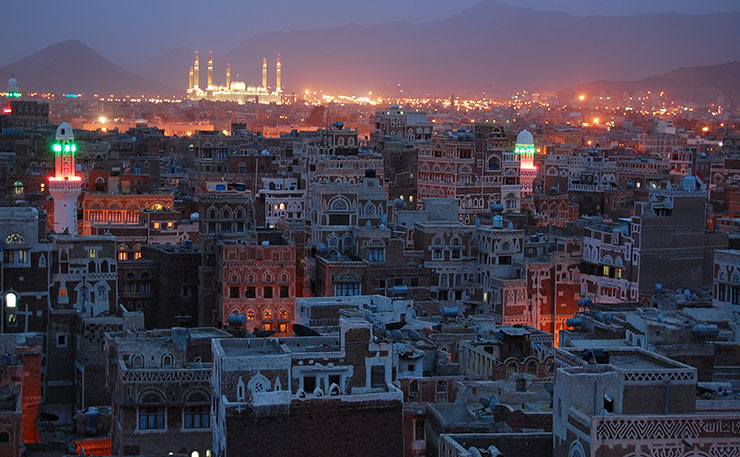
“It’s a sad reality,” Sara said.
At 32, Sara is a Yemeni-Scottish film director. At the age of 17, after spending most of her childhood in Sana’a she moved to Scotland to finish high school. At university she took up classes in comparative religion and international and human rights law.
The same year she left, the 9/11 attacks took place in New York.
“That also had a huge influence on what I ended up studying because of the way I saw people perceiving Arabs, and treating Arabs in my own environment. I saw this rising racism towards them and this hostility towards anyone who was darker skinned,” she said.
“They called us ‘the dark ones.’”
In 2011 Sara returned to Sana’a with the intention of spending time with her family to make a film that would eventually be called The Mulberry House.
There is a scene in that film where Sara, her sister and their father are sitting in their garden talking about marriage. In the shade of high courtyard walls, surrounded by plants tended to by Sara’s grandfather, they clash over stories of how their father had wanted to marry Sara off when she was younger.
Then, with the camera still rolling Sara walked from that scene to find that on the TV, peaceful anti-government protests in central Sana’a had descended into massacre.
The revolutions that were taking place across much of the Arabic speaking world had arrived in Yemen.
“That,” said Sara, “became quite a big story as well.”
It was huge. The revolution would end 33 years of rule by president Saleh, who in handing over power to his successor Mansur Hadi set the stage for the conflict in Yemen today.
It had started out with a tent in the capital’s Change Square. More a long street than a square, tents belonging to occupying protesters began to spread from street corner to street corner.
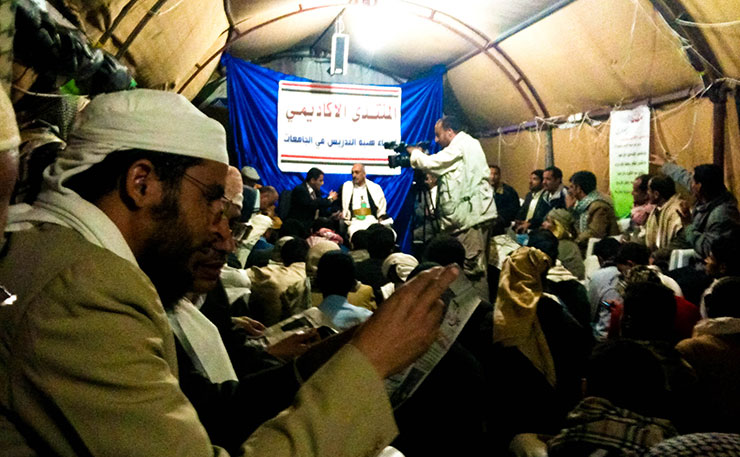
The ad hoc tent city became something of a symbol for young Yemenis.
In those tents you could find tribesmen, the educated, the young and old protesting peacefully together. At one end of the Square a makeshift wall topped with broken glass had been built by locals to stop the protests from expanding into their neighbourhood.
On March 18, the same day that Sara sat in the garden with her father and sister, fearful cries of ‘Allahu Akbar’ mingled with government gunfire as that wall came down. Doused in petrol and set ablaze, the wall fell, as ultimately would the government. On a day marked by the loss of 52 lives, it became known as the Friday of Karama, the Friday of Dignity.
Before all this, Abdulrahman Hussien – Afro to his fans – had met Sara through a friend at a coffee corner in Sana’a. They had a camera with them. The two were filmmakers and would become founding members of the media collective Support Yemen.
Originally wanting only to create a YouTube video, the short film they would make documenting the Friday of Karama would go on to be nominated for an Academy Award in 2013. They both walked the red carpet.
Afro and Sara called the film Karama has no Walls. “You cannot build that,” Afro said. “Human dignity will go beyond the wall.” It was metaphorical.
But the optimism of the revolution has been replaced by the fatigue of a conflict with no end in sight. “There’s been this huge divide within society,” said Sara. “People have been completely polarised.”
Families and society have been divided along old ethnic and sectarian lines. In such circumstances, it can be challenging to remain neutral.
“It’s really hard to be like ‘oh yeah, I understand where the Saudis are coming from’ while they are dropping bombs on us,” Sara said.
For Sara, the difficulty of representing the conflict since the revolution has only intensified. “I found it very easy to represent the revolution because it was very clear who the enemy was,” she said. “It was the state, it was the system, it was us versus them, whereas now it is everybody versus everybody.”
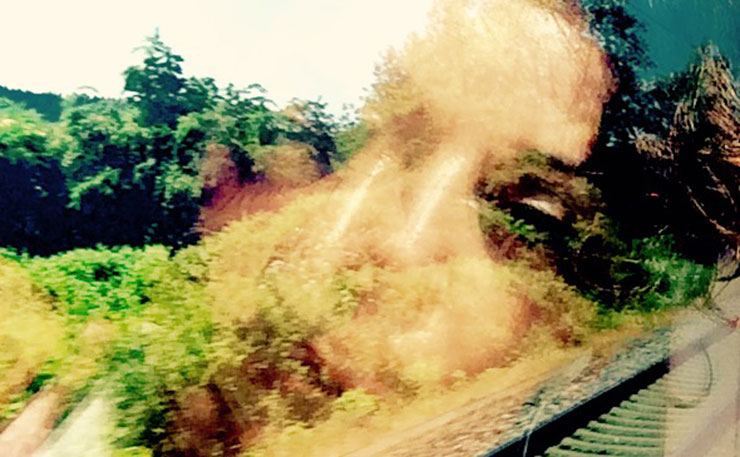
Representations by the media become one sided when access to all sides of the story are hindered by the physical hurdles of siege and blockade.
“It’s a very difficult time for anybody to represent this war with any real sort of accuracy,” said Sara.
Hope for a swift resolution to the war recedes as fast as the price of food, petrol and electricity has risen. During the hardships of the war, necessity has sometimes tempered tradition. Women are setting up charities, Sara said. They are creating foundations, cooking food for the poor, going out to fetch water from wells, queueing up to get petrol and documenting the conflict.
Yet at the same time the poverty brought by war has entrenched old stereotypes; with no money for university, young girls are married off.
“It is women who’ve really shone in this time,” said Sara. “I’m a feminist but in situations like these you really want to try and break stereotypes and that’s what I try and do in my work.”
Let’s ride a bike
When the Saudi blockade causes a shortage of fuel in Sana’a, people cycle. There was a truce that Saturday in May 2015 when 11 women wearing black abayas arrived with five bikes at highway 70 in central Sana’a.
It had been Bushra al Fusail’s idea. The road was used as a runway for planes back in the 60s and 70s. But on this day it was covered with broken rock. Two days ago it had been bombed in response to rumours that Russian or Iranian planes were planning to land there.
Bushra created a Facebook event for Yemeni women, ‘Let’s Ride a Bike’. It was her act of resistance to the war, to the relentless monotony of life under the Saudi airstrikes. Eighty women signed up as attending.
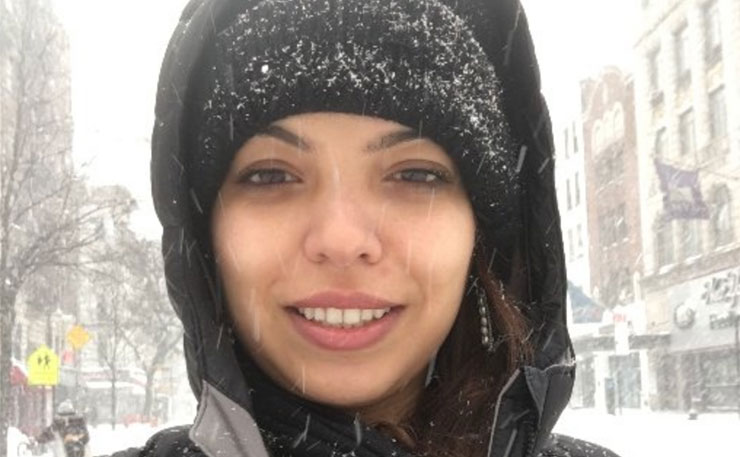
“It was the first time for the Yemeni community to see Yemeni women on a bike,” Bushra said. Some driving by were shocked, some shouted out encouragement. Bushra photographed it all.
Bushra had cleared the event with the local Houthi militia first. They were surprisingly okay with it in a country where conservative forces often view women cycling as immodest.
“We completely forgot about the war and completely forgot that we had been under attack for three months,” Bushra said. “We were just laughing.”
One woman driving a black 4WD Hyundai stopped on the side of the highway. She was veiled and hopped out of the car asking if she could join. She was one of the few who knew how to cycle and stayed only for a few minutes. Her friends waiting in the Hyundai filmed the antics on their phones.
“They’ve come out of the house, the situation is not good, they could hit us with an airstrike at any time,” said Bushra. “They’ve risked their life because of this very simple idea to inspire other Yemeni women to not give up. That’s resistance.”
The other day Bushra discovered her mother had started riding Bushra’s bike around their garden in Sana’a.
Bushra, 29, is a self-described feminist photographer. “I’m not going to tell you ‘oh my god, it started when I was a kid, I had this passion for art,’” she said. “Nothing like that.” She bought her first camera, a Canon, from a visiting Yemeni-American friend.
The second of four daughters, she spent 10 years with her family in Portland, Oregon where her father had studied as an engineer. They then moved back to Yemen – Bushra said her father feared they were becoming too American.
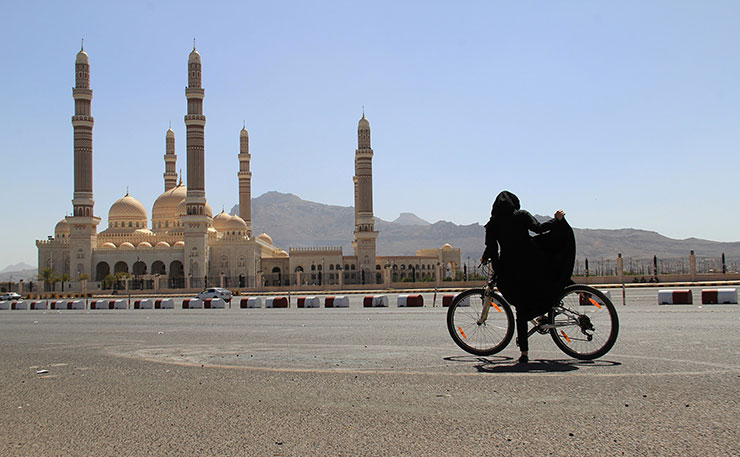
Back in Sana’a, her family lived an upper middle class life in a villa downtown. Bushra was raised as a Muslim. But Islam, the faith of over 99 per cent of Yemenis, is known to her family in a different way, it flows through their bloodlines. Just like the prophet Muhammad, Bushra and her family were of the Banu Hashim clan – an instant elite, just by birthright.
“We were treated a bit different in the community,” she said. “After I became a photographer, I started to go out of that circle and understand more about my society.”
Hard though, to escape what Bushra called the ‘double judgment’ accorded to someone of that idolised bloodline. “So when they ask about my name they don’t ask about my first name; they ask about my last name. And this is how it goes in Yemen,” she said.
It didn’t stop her though. Bushra took a job at a film production company while studying in Sana’a. Her first photography exhibition was held at the German embassy in 2009. Bushra called it ‘10 kilograms of justice’. It was about women’s rights.
“I always do photography about women’s issues,” she said. “Because in the Middle East they don’t understand what are their rights. They don’t understand and that makes me so angry… That’s why I call myself a feminist photographer.”
Without the walls of the German embassy to keep it from public view, Bushra’s biking event got a lot more press.
“I got as many negative messages as I got positive messages,” said Bushra. Social media fed back into the loop as Yemenis abroad tweeted cycling pictures accompanied by the hashtag #bike4yemen. A local imam talked about Bushra’s event during a Friday sermon. According to Bushra, “he was like ‘forbidden. Women. Bikes’.”

His attitude is reflective of something Bushra calls the patriarchy. It is a word that implies a force that is by no means unique to Yemen. The world is full of patriarchies. Yemen’s is just one. When a man is the master of the house and all else follows from that, then you have the bare bones of a male-dominated system.
In Yemen, it enforces the attitude that women should wear a veil. In France, it might enforce the attitude that they shouldn’t. It’s controversial.
For Bushra, it is a clear question of the freedom to choose. “It’s not for me to come and tell [women]it’s annoying from our end to see them covered,” she said. “She is comfortable; she is the one who is in control.”
“It’s very simple. Why are you wearing that jacket?” she asked.
“Because I want to.”
“It’s the same thing.”
Then in 2015, after four months living under Saudi airstrikes, Bushra left. She spent time in Jordan with her mother and sisters before going intercontinental, ending up back in the United States.
“I had a big shock going out from Yemen because I thought everybody’s going to talk about the war – which basically nobody knew about.”
“There’s a lot of bad things happening in this part of the world and everybody is just in their safe comfort zones,” she said. “Just to know one story about one Yemeni person is enough… For me, to know for them Yemen exists is a big deal.”
Bushra wasn’t long in the US before she was contacted by Code Pink, an anti-militarism social justice movement, to help campaign against a major arms trade deal between the US and Saudi Arabia.
Bushra’s response: “I was like ‘hell yeah’”.
“I don’t know if you’re following Code Pink on Facebook,” she said. “If not, you should.”
Here are two facts. A UN Security Council report in April found the Saudi-led coalition was responsible for 60 per cent of nearly 2,000 child casualties in Yemen in 2015. That same year, the US sold more than $US20 billion in arms to Saudi Arabia.
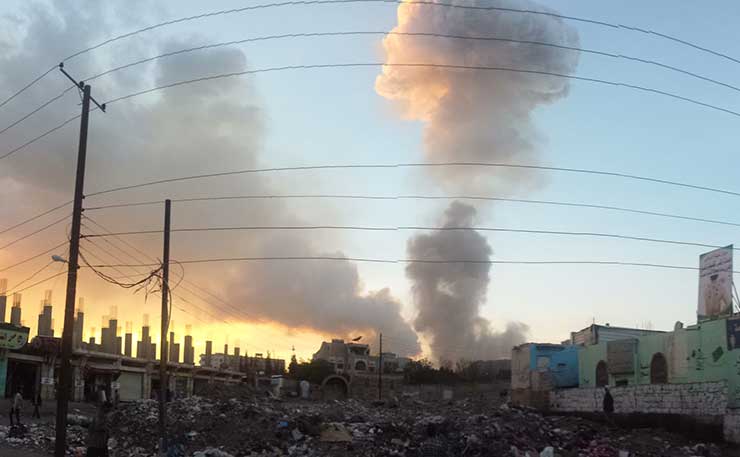
“It’s not a Saudi war against Yemen. It’s a US and Saudi war against Yemen. It’s not because they just sell the weapons. No, they control the hits, the airstrikes and lead it – the US,” Bushra said. “They are leading the war.”
On the 10th of October, an airstrike hit a building where hundreds of Yemenis had gathered in mourning for a funeral. Initial reports stated over 140 people were killed and hundreds of others injured. “The place has been turned into a lake of blood,” said one rescuer, Murad Tawfiq.
The ICRC Yemen tweeted that it was preparing 300 body bags to attend the scene. The Saudi-led Coalition denied – then later admitted – responsibility. In a surprise twist, Daesh claimed responsibility for the attack despite having no air strike capacity. The US also indicated it would reconsider its relationship with the coalition, stating US cooperation with Saudi Arabia was not a ‘blank cheque’.
Photos have since emerged of fragments of US-made bombs at the scene.
“Most of them, they’re hospitals, schools, and factories,” said Bushra. “What the hell are they doing? What the hell are they doing bombing schools? Hospitals? They’re making a disaster there.”
Women like us
Thana Faroq is a street photographer. She is not Halima, who stood in her half-collapsed house and told Thana how she arrived home with her children to find it this way. She is not Om Kalid, whose child was born in a tent holding 12 family members at a camp for Internally Displaced Persons because their house was destroyed. She is not Aman, a young girl who graduated from high school and wants to go to university, but can’t, because of the war. Thana Faroq photographs these women, tells their stories.
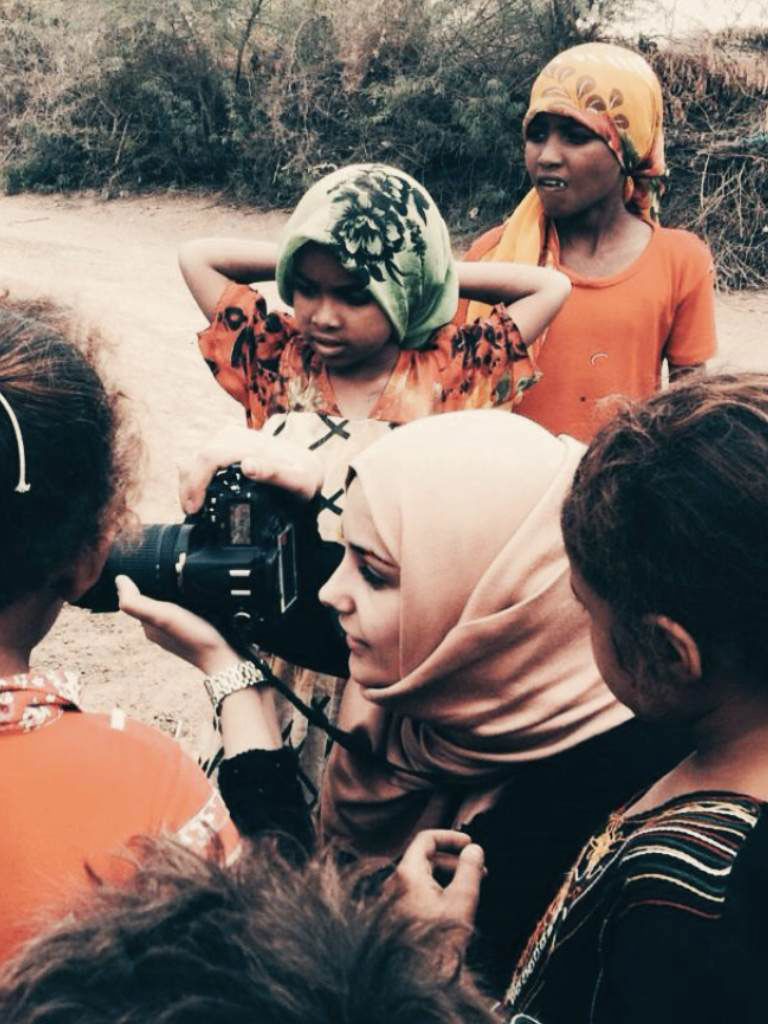
“They lack a very important right,” she said. “The right to speak up and not have anyone like me speak about them. Because they are the ones who know exactly what happened to them and what they are lacking.”
I got in touch with Thana using social media and a smartphone. Thana is only too aware that often the women she photographs don’t have these means to make themselves heard.
“I feel one challenge you’re going to face is you need to consider these women are not like anyone else in the world,” she told me. “They are not educated, they feel they are useless, they are lost, they feel they are not important.”
Many of these women, as with many of the people Thana photographs, she meets in the old city of Sana’a. Rammed earth and burnt brick structures rise several frenzied storeys above entangled stone pavements. Qamariya stained glass windows combine with white gypsum to dance geometric patterns across their façades. Flat roofs are speckled with weather-worn satellite dishes. It is an ancient enclave of ochre skyscrapers from which a modern city spirals out.
Enclosed gardens known as bustans bear fruit trees, vegetable seedlings and spices, disrupting the city’s density. Minarets rise above mosques. The foundations of a cathedral and martyrium lie beneath. In various historic reconstructions the people of both the Bible and the Koran have left their mark on Sana’a. Settled in a valley, surrounded by hills, its memory goes back over 2,500 years.
“When I go there I feel like we’re safe,” Thana said. “It still holds this sense of peacefulness, things are normal, things are okay.”
Despite its listing as a World Heritage site, this illusion of serenity is easily shattered. Saudi rocket attacks have repeatedly struck inside the walls of the old city, reducing colourful towers to rubble. Only a few months in to the airstrikes, UNESCO added the old city of Sana’a to the List of World Heritage in Danger.
The damaged schools, destroyed restaurants and other hallmarks of a city under siege challenge the intrinsic connection between people and place. “This is something you only see in movies,” Thana said. “It’s not real anymore, this is not my country.” Thana walks the old city to remember how her country used to be; on a Thursday she came across a group of men playing cards and drinking tea in the street.
“Aren’t you afraid?”
“Okay, if we’re afraid, why are you in the street?” they had replied.
In a city of over two million people, life has to go on. A perspective, an opinion, a history will determine whether it is the Houthis in Sana’a or the Saudis outside who are seen as liberators or captors. But somebody has to go out and put gas in the car.
It is 4.30am in the old city and the sound of slippers in the streets can be heard as men make their way to the mosque. As the call to prayer, the azan, rings out a stillness falls. “There’s a pureness in it, in spite of everything,” Thana said.
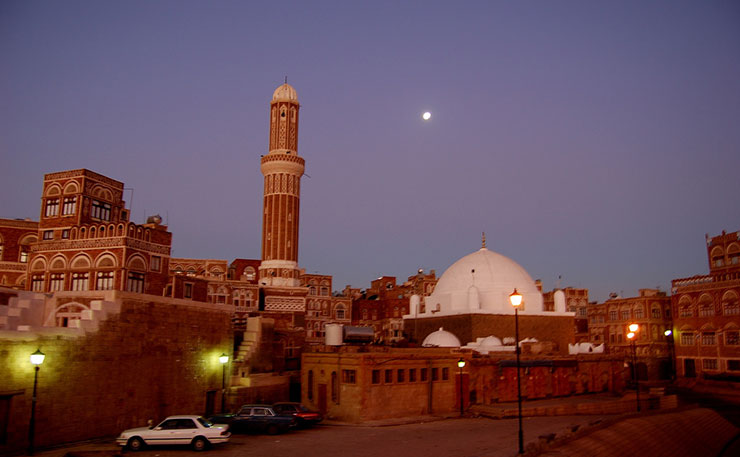
Like the inhabitants of the old city, the echoes of azans from a multitude of mosques meet in the streets, interlace, embrace and depart. It is common knowledge which azans demonstrate a better vocal range than others. The azan is heard five times a day; there are no limits to the number of airstrikes. When they coincide, the spirituality of the thing is heightened.
Then, on weekdays, women rise at 6am and prepare their children for school before walking with them. They return home by noon to tend to the house. Many people in the old city wear traditional clothes – men in a white shirt with an ornamental dagger, the janbiya, at their hip, women in the abaya, burqa or niqab.
By 12.30pm everyone is in the street having lunch, it is impossible to pass without being hailed over, breaking bread. But Thana would start long before that, meeting for breakfast and a cup of Yemeni coffee with her friends. She would walk the crowded markets of Jamal Street, pass by children playing football in the alleyways, take photos at alfresco libraries.
A woman tells Thana, “I miss eating ice cream.” There are people armed with guns. A popular urban legend is that there are 50 million small arms in Yemen. A recent study has this between six and nine million. They pass by walls featuring anti-American graffiti from the Houthis: ‘America is the mother of terrorists’. They used to stay out until late; these days Thana is home by 6pm. Everyone expects the airstrikes to start again overnight.
As Thana talked to Halima in the ruins of the frail woman’s house, she noted how it looked like Halima’s tears had caused furrows down her face. Halima’s neighbours were collecting money for her to rebuild the house, from scratch.
“They’ve got everything in their houses,” Thana said. “They invest everything and then suddenly it just disappears.”
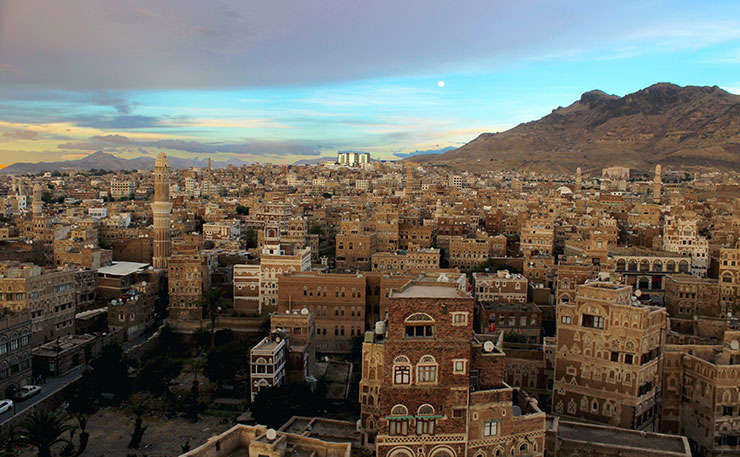
Yemen is one of the poorest nations in its region, with over 50 per cent of Yemenis living below the poverty line. Om Kalid in the IDP camp, having given birth in a small tent in front of her large family does not know how she will tell her child in the future that they were born in such conditions.
“That really affected me,” Thana said. “Everyone suffers from war but women particularly carry this burden. They have to do everything.”
There are currently more than three million internally displaced persons in Yemen. Aman does not want to get married yet. She wants to go to college and get a job, like millions of girls around the world. In 2015, the estimated literacy rate of Yemeni women was 55 per cent.
Thana had a photographic exhibition in Scotland last year, ‘Women Like Us’. It all harks back to a simple premise. “Women are not being heard enough,” she said.
Honey and silver
It was winter and it was cold and Noon Arabia was traveling to Germany with her family. She was wearing a headscarf with modern clothes, loose and long and colourful. Going through immigration in Munich she was stopped by the passport control. Where was she coming from? How long was she staying? Where? At what address was that? Where was her return ticket? The most casually sanctioned kind of interrogation.
Later, her younger son asked if it was because she was wearing a headscarf that she was stopped. The Paris attacks had happened a few weeks earlier and her son had heard a story about how an Egyptian woman was attacked by a German man who had ripped off her headscarf. Her son started to panic, so Noon went to a shopping mall and bought a beanie.
“And I was invisible,” she said.
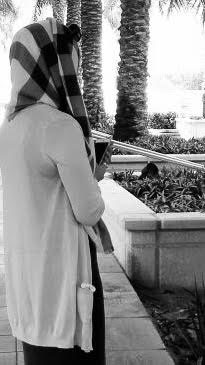
Wearing the beanie nobody noticed who she was. But wearing her headscarf the traditional way, people would stare, people would notice.
“It’s a very difficult time to be a Muslim in this day and age,” she said. “Because unfortunately with what’s going on in the world everybody is afraid.”
Noon Arabia is a pseudonym. Noon can’t reveal her name because of the conflict between where she lives, and what she writes. Depending on where she is in the world some people would prefer Noon cover her head, some people would prefer she didn’t.
The top of Noon’s head is red-hot real-estate.
Noon, 46, is a blogger and online activist. She is the daughter of a diplomat, growing up in different parts of the world. Their family would return to Yemen every summer. Her father made the point of instilling a sense of belonging to Yemen on such trips.
On Fridays they would go up and picnic in the hills surrounding Sana’a. They would take fresh produce, grapes and dates. Noon doesn’t live in Yemen now. By day she lectures to expatriates about Islamic culture. In the time leftover, she goes by her preferred pseudonym writing about the country that is still her home.
In 2011 Noon started tweeting about the revolution taking place in Sana’a. “Everyone was covering what was happening in Egypt, what was happening in Libya, hardly anyone was mentioning Yemen,” she said. So she did what many people were doing at that time, she created a hashtag, #SupportYemen.

Like many hashtags at that time, it quickly gained some traction, picking up attention in capitals all over the world. Unlike many hashtags, it then promptly turned into a media collective. Support Yemen is now the banner of an independent-minded collective of Yemeni activists, journalists, bloggers, vloggers and photographers – including Sara Ishaq, Sarah Jamal Ahmed and Abdulrahman Hussien.
They are a close-knit clan. Sub-groups have developed within the collective according to function: The Nerds, the Kool Kats, Weirdos and Gold Diggers.
Creative communication strategies are their tools for change, telling untold tales is their passion. Their office is one floor of a two-floor villa in what used to be the diplomatic quarter of Sana’a. They have a conference room, a few offices, a garden and, most importantly, a database full of volunteers.
Just a few blocks away is a large diplomatic jail for political prisoners. They leave it alone.
For Noon, the continued reporting of atrocities from a country where loved ones live takes a toll. “This happens when I’m speaking with my aunt and I can hear in the background explosions and she’s like ‘yes they started bombing again’,” she said. “I cannot close my eyes completely because that’s my country, that’s my homeland, that’s where my friends and family live.” People in Yemen sometimes change their social media profile pictures to black when they lose family or friends to the war.
Beyond warfare, Yemen has recently taken its share of natural hard knocks. Currently, more than an estimated 100,000 farmers, beekeepers and herders are deemed to be at risk from an outbreak of desert locusts across five governorates in Yemen. It was only in November last year that a rare tropical cyclone struck Yemen’s coastline, displacing more than 6,000 people. Finally, in April heavy rain leading to flash flooding affected nearly 50,000 people across the country.
These added elements of hardship inflate the negative fallout from the war. Yet these stories of victimization are just one side of the coin, Noon would argue. There is much the conflict obscures. One of the first blog posts Noon wrote was about everything the world had forgotten about Yemen.

Yemen’s Sidr honey is considered one of the finest and most distinctive tasting in the world. Coffee was exported to Europe for the first time from the ancient Red Sea port of Mocha, lending its name to the type of bean. Yemen’s silver work is famous and its architecture, as in the old city of Sana’a, in a class of its own.
Her attachment to Yemen notwithstanding, Noon still feels an obligation to be a force for change. It is about saying that women are not less qualified than men, that they don’t have less rights, that there is no shame to being a woman. In the midst of a country in conflict, she sees women going out and breaking the social norms that traditionally bound them.
“[Women] are not given that opportunity and I think this has to be addressed back from the roots, not just the government from the top, from the Ministry of Education,” Noon said. “It has to start by raising this awareness within the family. It has to be done socially, by communities, workshops even, to the Islamic clerics or sheikhs or imams in the mosques. They have to be aware of this. We can also speak about it during our Friday speech. It has to be a common thing, the importance of education, especially for females.”
Noon knows for any of this to happen, there needs to be a resolution to the conflict soon. “So I am with nobody in this war. I am only with the civilians that are being injured and killed.”
As Noon sees it, the only way to peace is through dialogue.
The absence of justice
“I’m not a nationalist,” Sarah Jamal Ahmed said. “I am a person who wants to stay.” Sarah knows what being a non-nationalist Yemeni means to her. They don’t contradict.
“I’m a person who wants to stay because this country is a continuous learning process for me,” she said.
In 1994 Sarah Jamal Ahmed was six years old; that was her first war. The newly united Republic of Yemen had fractured and squared off along old borders of north and south in civil conflict.
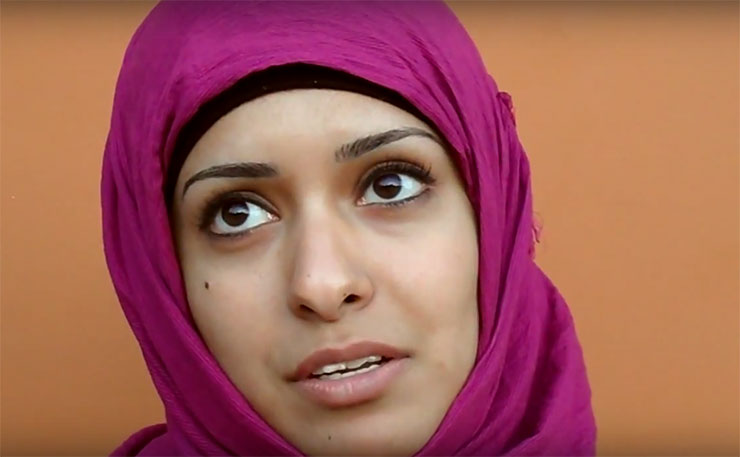
As a child, Sarah listened. In a country where oral storytelling is treasured, conflicts like this one form part of her memory, and the memories of those around her; her family, neighbours and people she now works with. Familiar conflicts, even if she hasn’t lived them.
Sarah’s grandmother is illiterate. Sarah’s parents were the first generation in both their families to learn how to read and write.
“This country developed a sense of curiosity in me, of being humble and being a good listener, of very entangled histories,” Sarah said. “Where all the turmoil and beauty within have made every human being around me a moving archive.”
Sarah Jamal Ahmed is 28-years-old, and says she has seen more than 10 wars so far. “Each time you ask a question about memory,” she said. “I will have to date it with a certain conflict or a certain war.”
Sarah is not a morning person and has already dealt with her morning demons when we speak. “There is rage,” she said. Rage at having to figure out on a daily basis whether what she is doing makes sense or not, while people are dying.
“I make a daily choice to implore my rage into producing something that doesn’t take away my definition, my own words, my own narratives for me,” she said. It’s a difficult process.
So Sarah Jamal Ahmed is angry. “I think it’s my basic right to be,” she said.
They used a black curtain as a backdrop in the empty apartment room, a single wooden chair placed in front of it. The idea for the new Support Yemen film had been Sarah’s. It took Afro one day to shoot it. In the edit they added music and voiceover to the footage of Sarah with a piece of tape over her mouth staring down the camera, silenced. It was dramatic, melodramatic maybe. But it made its point as indicated by a petition beneath the video.
A clarion call for the need to speak out against child marriage in Yemen. UNICEF estimates that 32 per cent of Yemeni girls are married by the age of 18. It is injustices like these that drive Support Yemen.
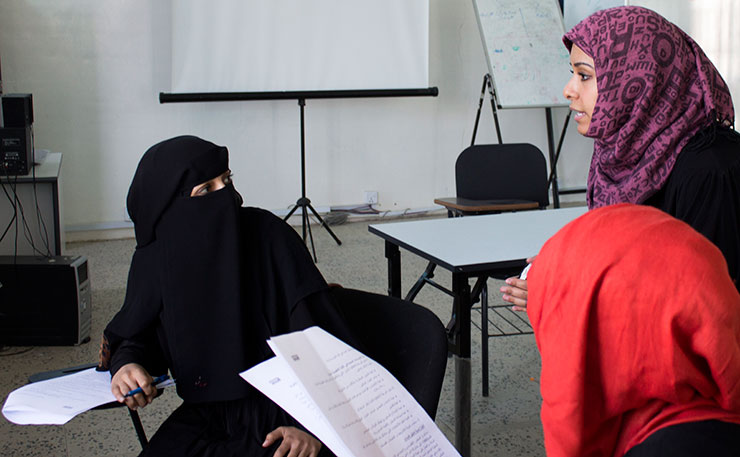
“I would insist on saying, and a lot of people would not agree with me, the definition of peace, for women at least, is not the stop of gunfire,” Sarah said. If Saleh and Hadi reached a settlement tomorrow, if the bullets stopped flying and the bombs stopped falling that would not meet Sarah’s idea of peace. Women would still be at war.
“It’s the absence of justice to me,” she said of war. “That’s my personal definition.”
To Sarah, if a woman does not have access to a hospital, if she doesn’t have access to electricity, if she doesn’t have access to shelter she does not live in peace. If Yemen’s constitution does not recognise women as a separate entity, with inseparable rights and if women can’t express themselves freely, they do not live in peace.
“To me the absence of justice is war,” she said.
Sarah feels keenly, however, that the conflict between Yemenis is not free from the influence of outside nations looking in. “This war did not happen in a vacuum,” she said. “There is a history of arms trade. There is an international community that is responsible and involved and engaged in this war.” It is hard to talk about the conflict in Yemen without the history that precedes it.
The first US drone attack in Yemen took place in 2002. That attack targeted Abu Ali al Harithi, a leader of Al Qaeda in Yemen. Since then the US has continued using drones and more conventional methods, like jet aircraft and cruise missiles. US drones account for up to 100 confirmed civilian deaths; covert US operations – up to another 100.

Imagine Yemenis looking outward from their country. In the US, they see a major world power selling billions of dollars in weapons to regional powers like Saudi Arabia. The US not only watches on as Saudi Arabia points these weapons at Yemen, but it is complicit in their direction, providing intelligence and refuelling Saudi jets mid-flight.
Yemenis witness US drones and jets seeking out their own targets on Yemeni soil. That image doesn’t exactly lay the foundations for a sterling relationship. The Houthis recognise this anti-American sentiment and seize on it. “I am against militarisation as a solution of anything,” Sarah said. And more, a war of violence, of life and death shifts priorities. It denotes the designation of certain issues to be marked as ‘for later’. Too often in the context of war, women’s issues fall into this category.
But Sarah notes how some women have used their battles with violence, against militarisation in Yemen in a way that helps them in their own battles against patriarchy. “I give you art as an example,” she said. “I give you writing, I give you working with medical staff in different places as examples.”
“I’m not a big fan of theories of patriarchy that exclude all other intersections of oppression and focus only on patriarchy as the only reason for injustices in the world. But it is a very important factor,” she said. “In the case of Yemen everybody is subjected to this system, men and women. Men are expected to fight; they’re expected to comply with this definition of hegemonic masculinity.”
The azan sounds in the background as Sarah speaks. Within and without, Yemen’s war has been a life changing force these last 19 months.
Yet for the women of Yemen the war won’t end, even as the guns fall silent.

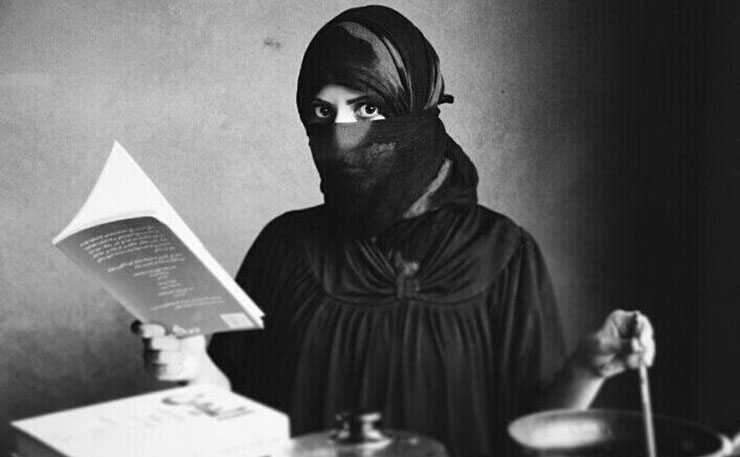




Comments